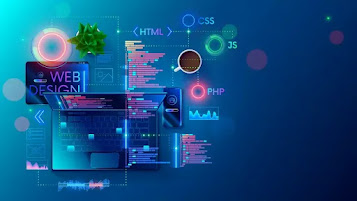In the ever-changing landscape of the internet, web design continues to evolve at a rapid pace, driven by advancements in technology, changes in user behavior, and emerging design trends. Aspiring web designers, equipped with the knowledge and skills gained from a comprehensive website development course, are at the forefront of this evolution, shaping the future of digital experiences. In this blog post, we'll explore the evolution of web design, highlighting key trends and techniques that define modern websites. Additionally, we'll delve into the importance of understanding web development course fee, ensuring accessibility to quality education in this dynamic field.
The Foundation of Modern Web Design: Website Development Course
A website development course serves as the cornerstone of a web designer's education, providing a comprehensive understanding of the principles and practices of web design. Through hands-on projects, practical exercises, and expert guidance, students gain the skills needed to create visually stunning, user-friendly websites that meet the needs of today's digital audience.
What is Web Development trend in 2023
In 2023, the field of web development is expected to witness several notable trends, driven by advancements in technology and evolving user preferences. Enrolling in a website development course is crucial for aspiring developers to stay abreast of these trends and remain competitive in the industry.
One significant trend is the continued rise of Progressive Web Apps (PWAs), which combine the best features of web and mobile applications. PWAs offer fast loading times, offline functionality, and app-like experiences, making them increasingly popular among users.
Another trend is the widespread adoption of serverless architecture, which allows developers to build and deploy applications without managing servers. This approach streamlines development workflows, reduces infrastructure costs, and enables greater scalability and flexibility.
Additionally, the focus on accessibility and inclusivity in web development is expected to intensify in 2023. Developers will prioritize creating websites that are usable and navigable for all users, regardless of their abilities or disabilities, by implementing features such as keyboard navigation, semantic HTML markup, and alternative text for images.
Overall, staying informed about these trends through a website development course will empower developers to create cutting-edge websites that deliver exceptional user experiences in 2023 and beyond.
Understanding Web Development Course Fee: Investing in Education
While pursuing a website development course offers invaluable benefits, understanding the associated fees is essential for aspiring web designers. By investing in quality education, students gain access to industry-standard tools, expert instruction, and networking opportunities that can propel their careers forward. Additionally, many educational institutions offer financial aid options or flexible payment plans to ensure accessibility to education for all.
Key Trends and Techniques in Modern Web Design
1. Responsive Design:
With the increasing prevalence of mobile devices, responsive design has become a standard practice in modern web design. Websites must adapt seamlessly to various screen sizes and resolutions, providing users with a consistent and optimized experience across all devices.
2. Minimalist Design:
Minimalist design focuses on simplicity and clarity, emphasizing clean layouts, ample white space, and concise content. By stripping away unnecessary elements, minimalist design creates a visually appealing and intuitive user experience.
3. Typography:
Typography plays a crucial role in modern web design, with designers leveraging a wide range of fonts and typography styles to convey brand personality and establish hierarchy. Bold typography, custom fonts, and creative text treatments are popular trends in contemporary web design.
4. Animation and Interactivity:
Animation and interactivity add depth and engagement to modern websites, captivating users and guiding them through the browsing experience. From subtle hover effects to immersive scrolling animations, dynamic elements enhance user interaction and bring websites to life.
5. Dark Mode:
Dark mode has gained popularity as a design trend, offering users a stylish and immersive browsing experience while reducing eye strain in low-light environments. Websites with dark mode options provide users with greater flexibility and customization.
6. Accessibility and Inclusivity:
Accessibility is a fundamental principle of modern web design, ensuring that websites are usable and navigable for all users, regardless of their abilities or disabilities. Designers must prioritize accessibility features such as keyboard navigation, alt text for images, and semantic HTML markup to create inclusive digital experiences.
Conclusion
In conclusion, the evolution of web design is characterized by a blend of innovation, creativity, and user-centricity. Aspiring web designers, armed with the knowledge and skills gained from a website development course, are well-positioned to embrace emerging trends and techniques and shape the future of digital experiences. By understanding the importance of web development course fees and investing in quality education, students can embark on rewarding careers in this dynamic field. From responsive design and minimalist aesthetics to typography, animation, and accessibility, modern web design encompasses a diverse range of trends and techniques that cater to the needs and preferences of today's digital audience. With a commitment to innovation and a dedication to user experience, web designers have the power to create impactful and memorable websites that resonate with users and drive success for businesses and brands alike.





0 Comments